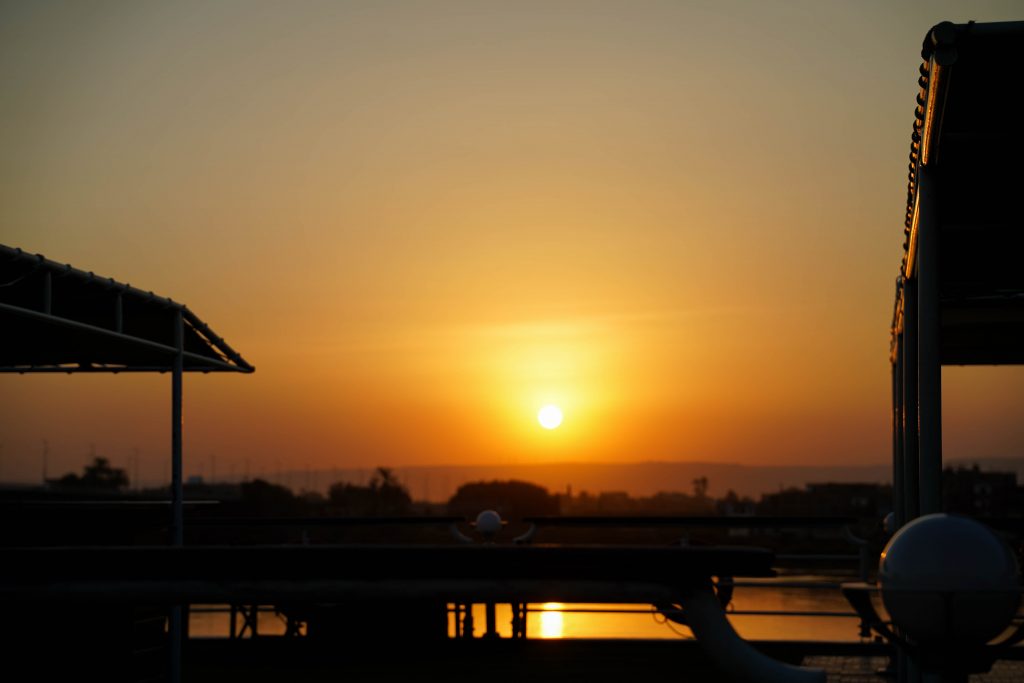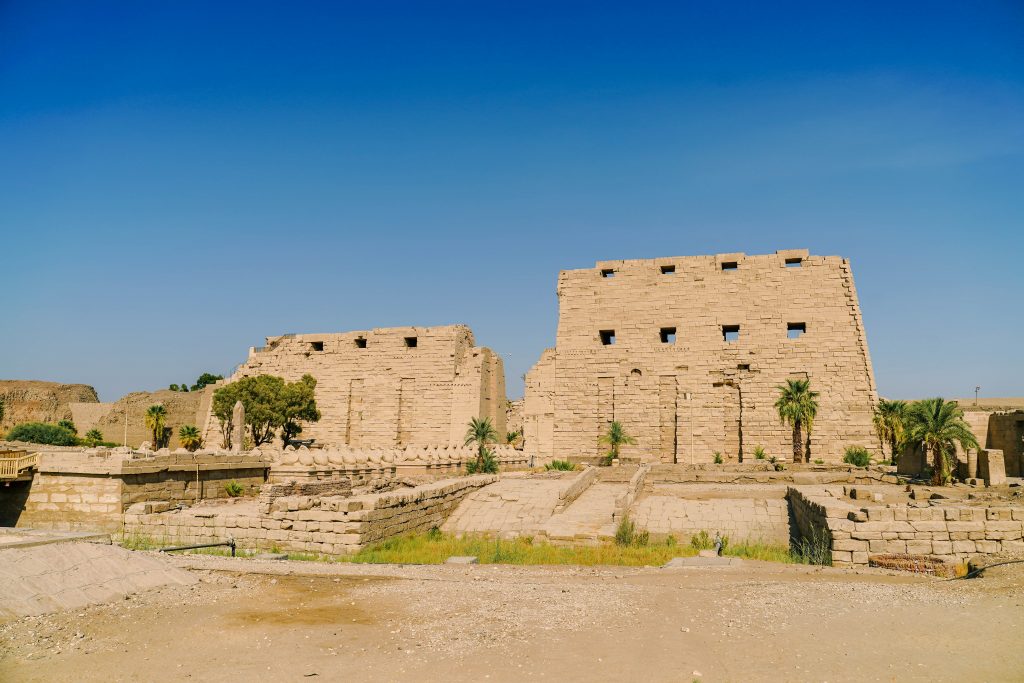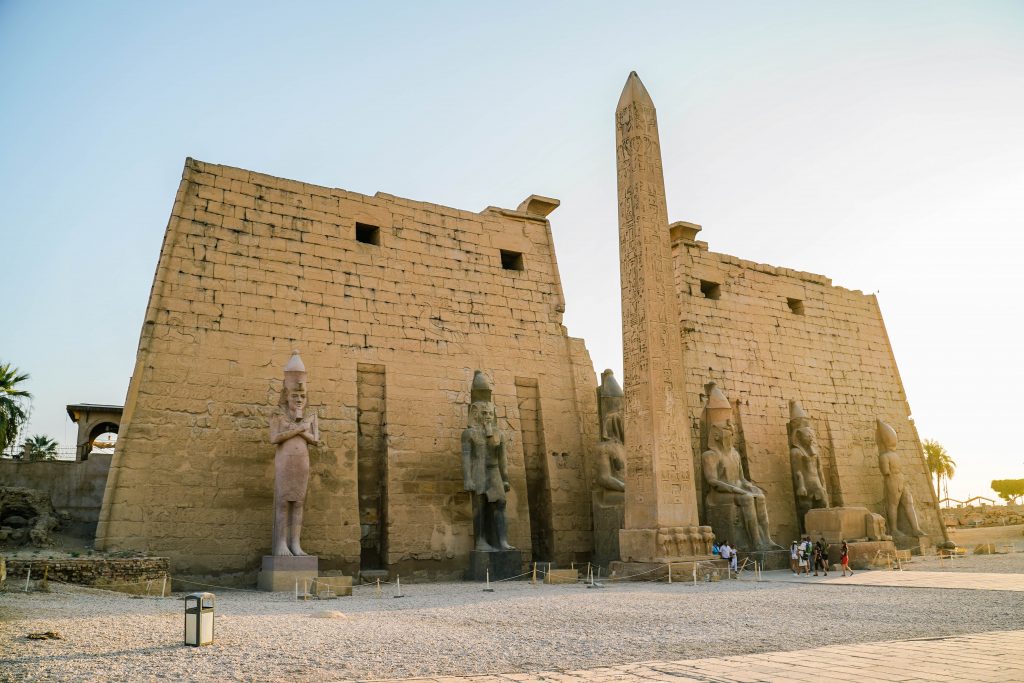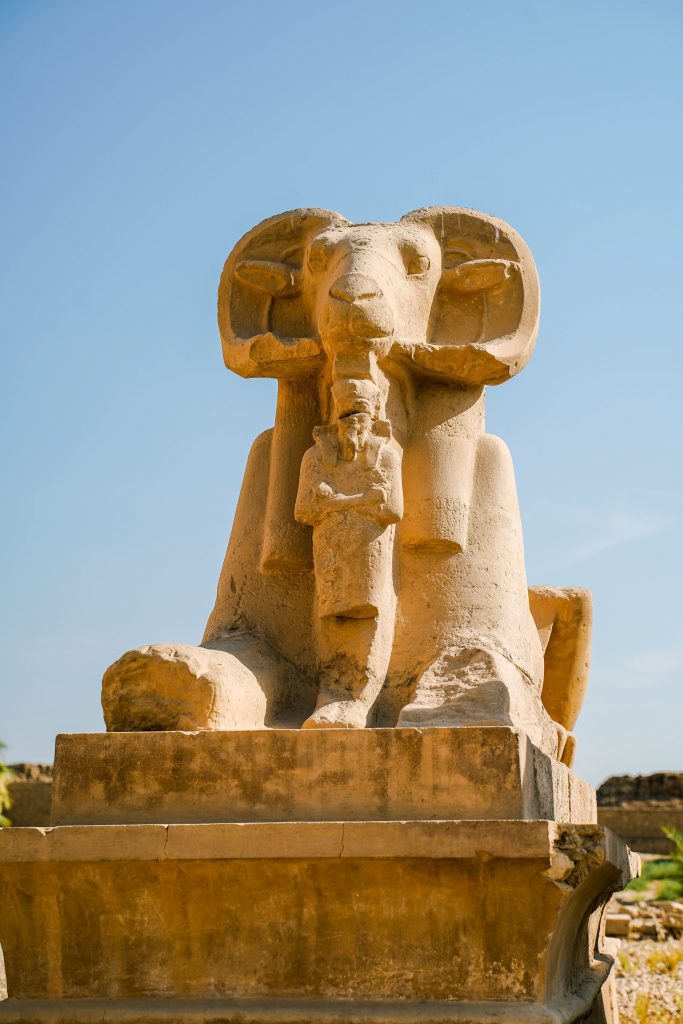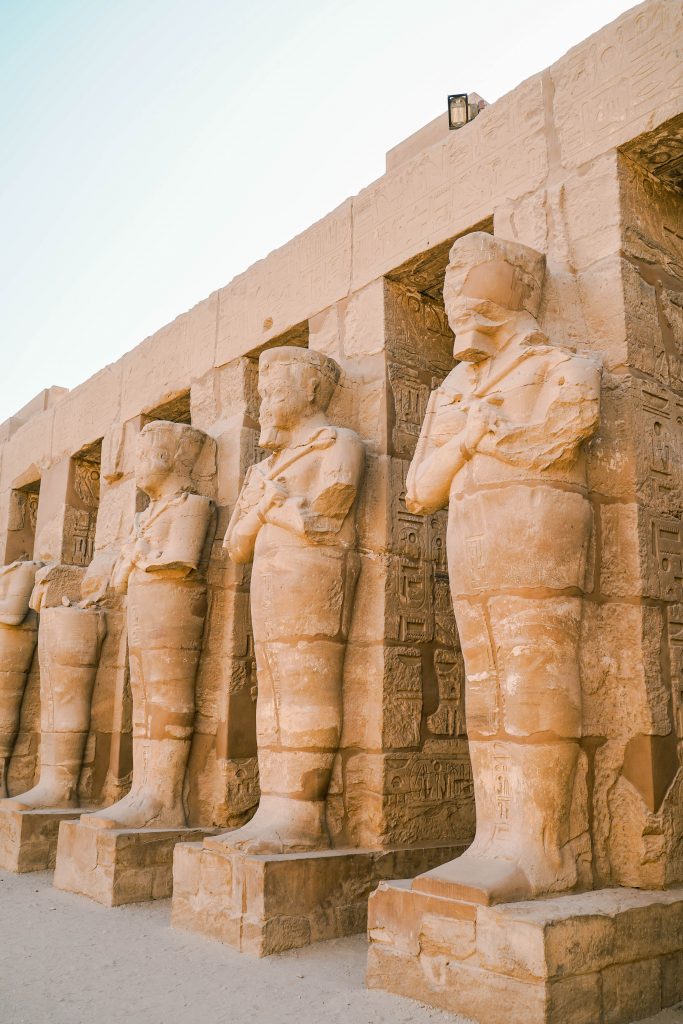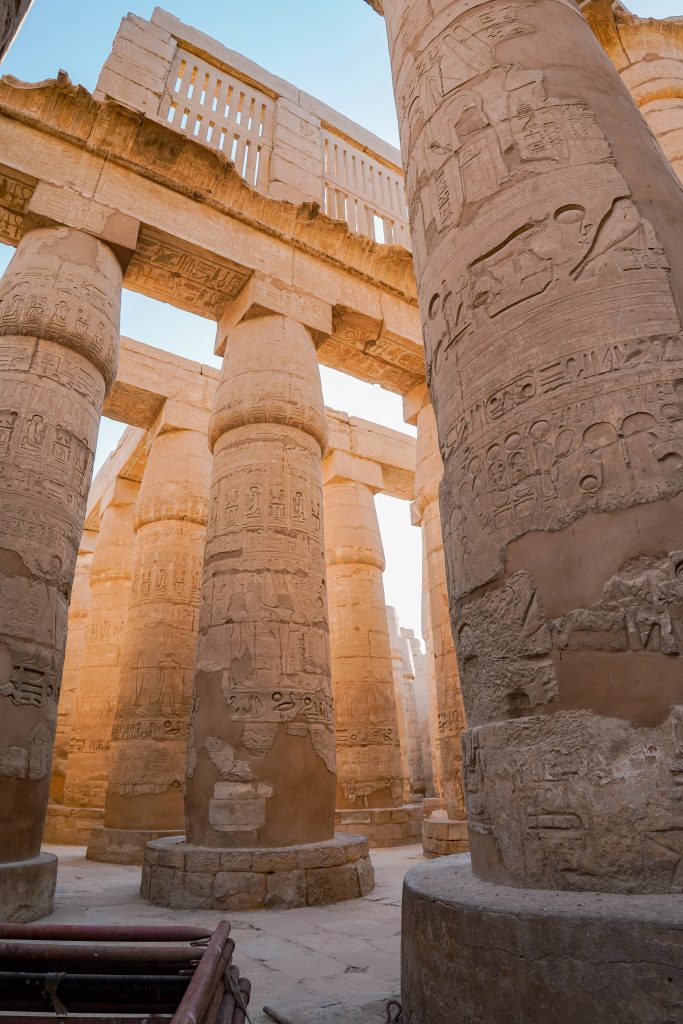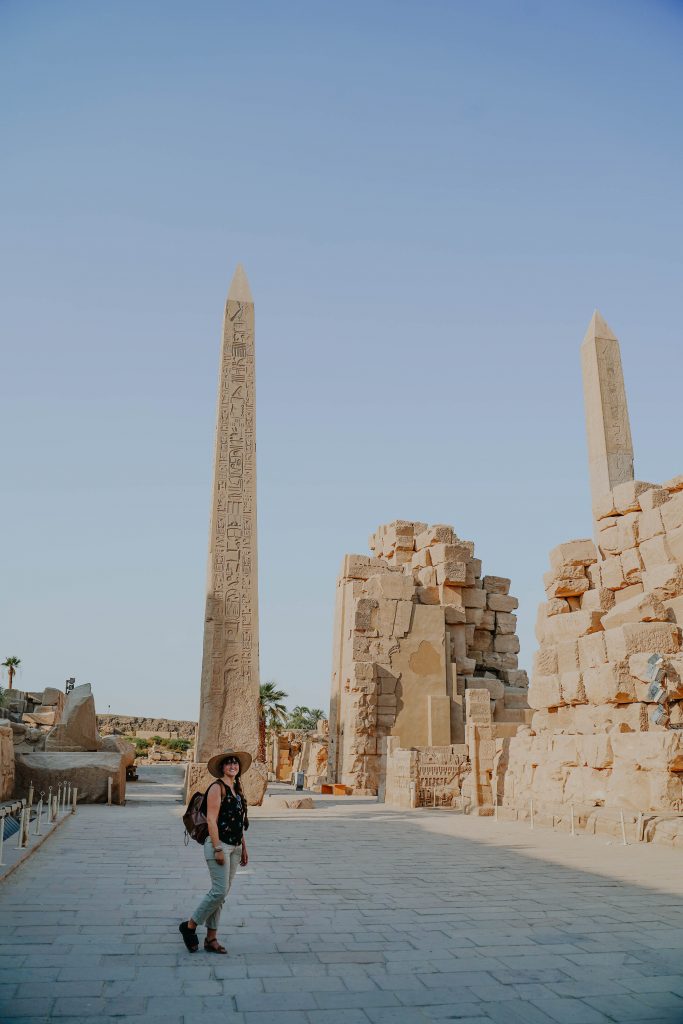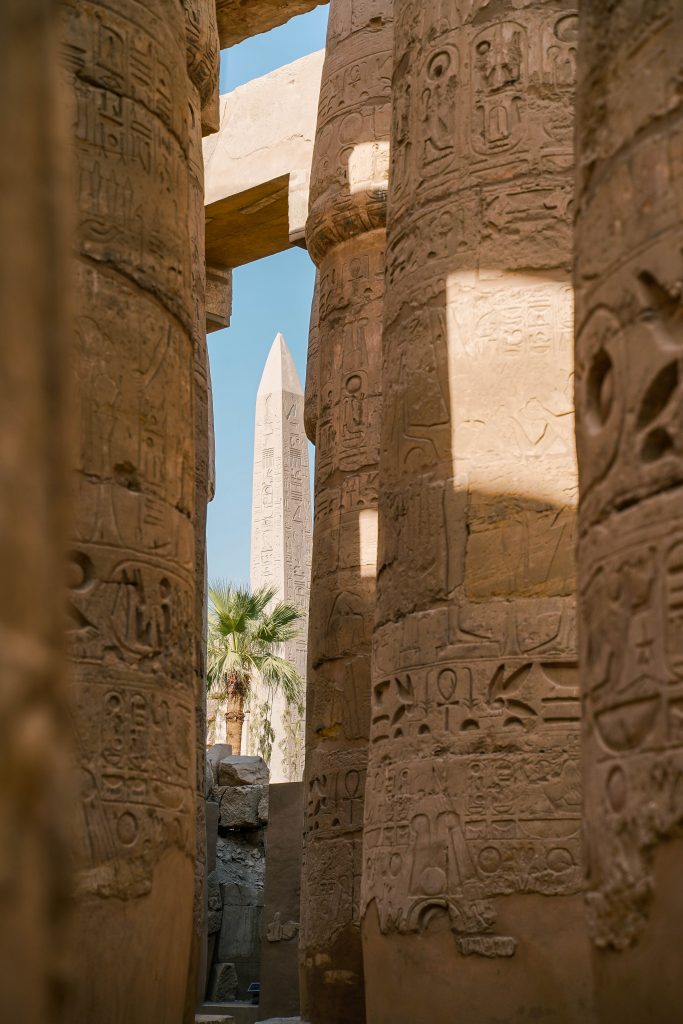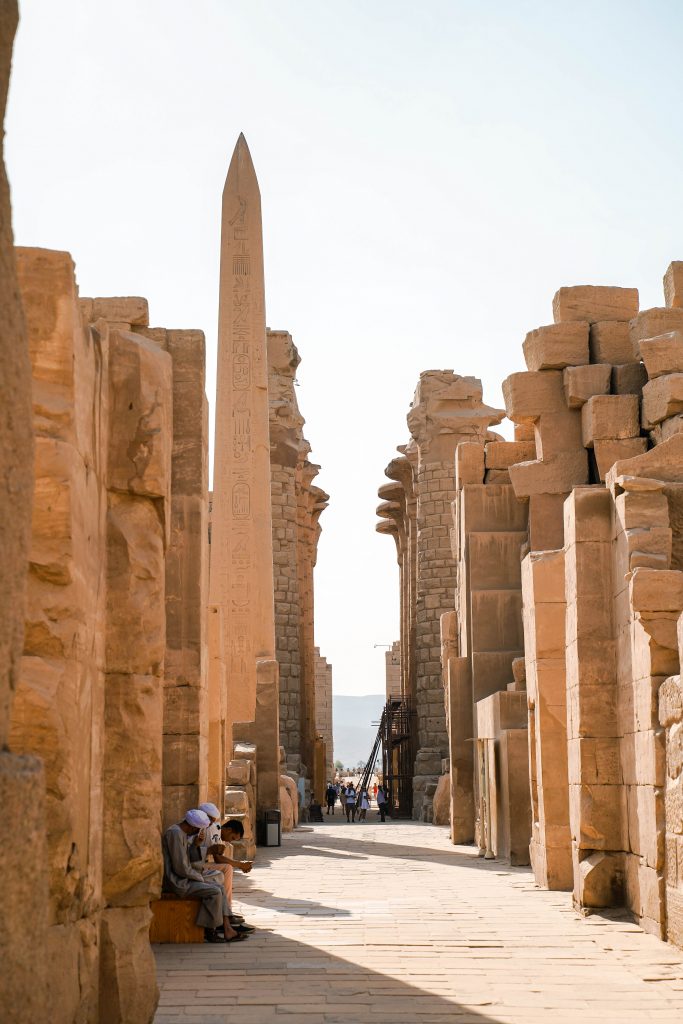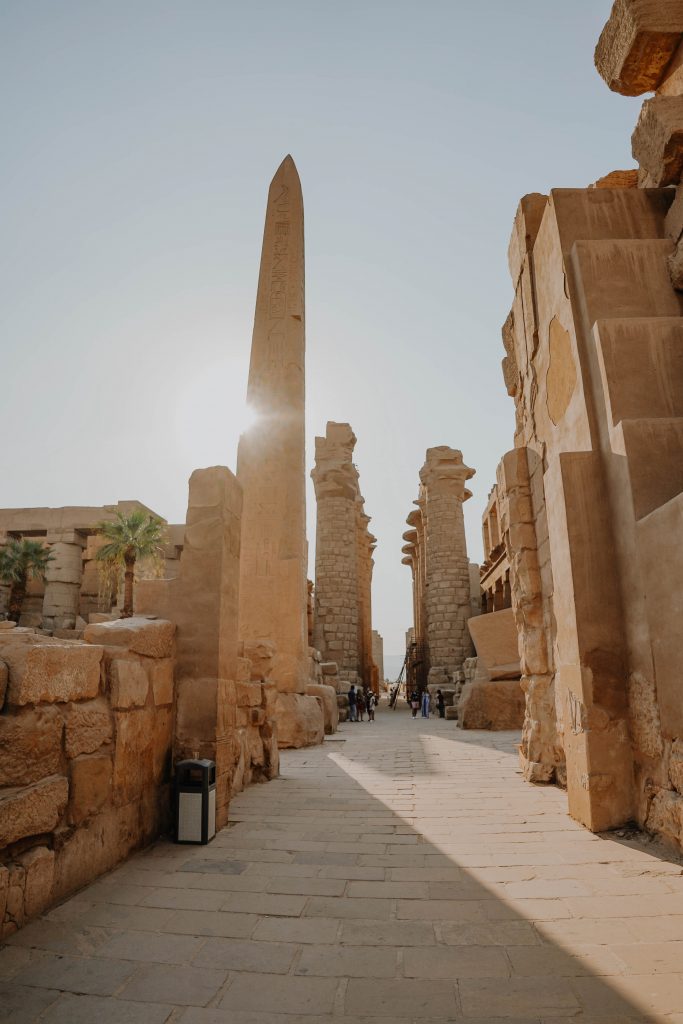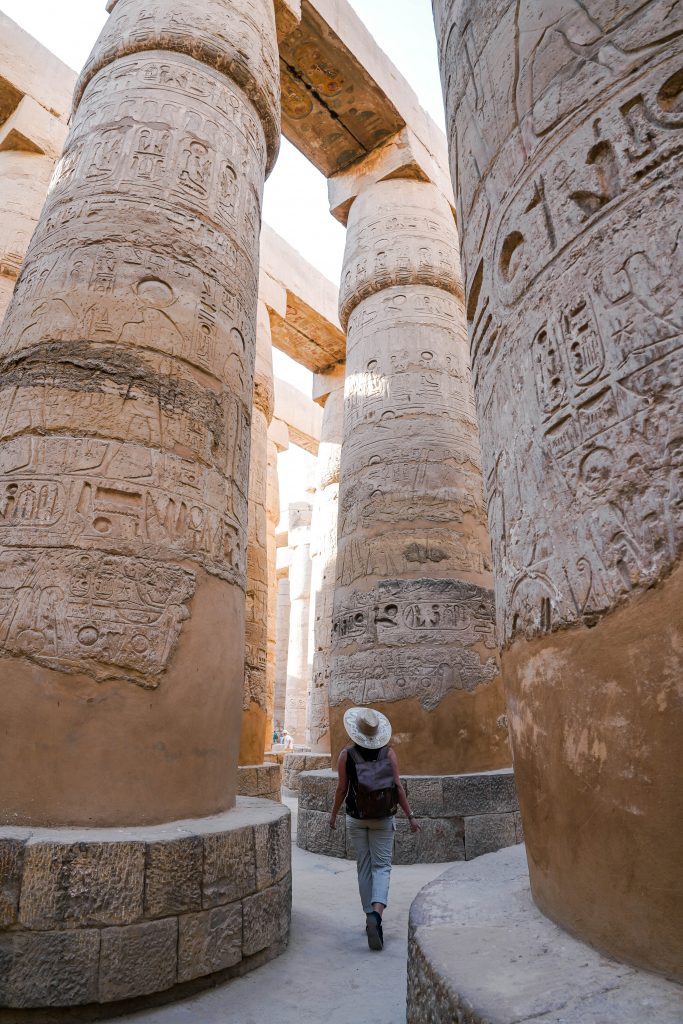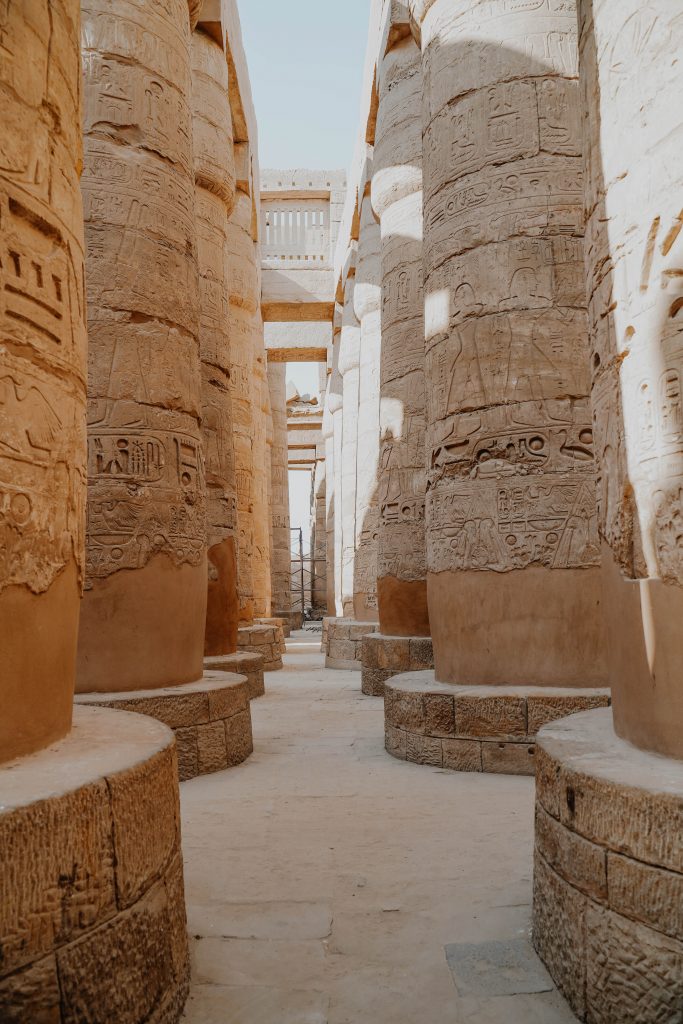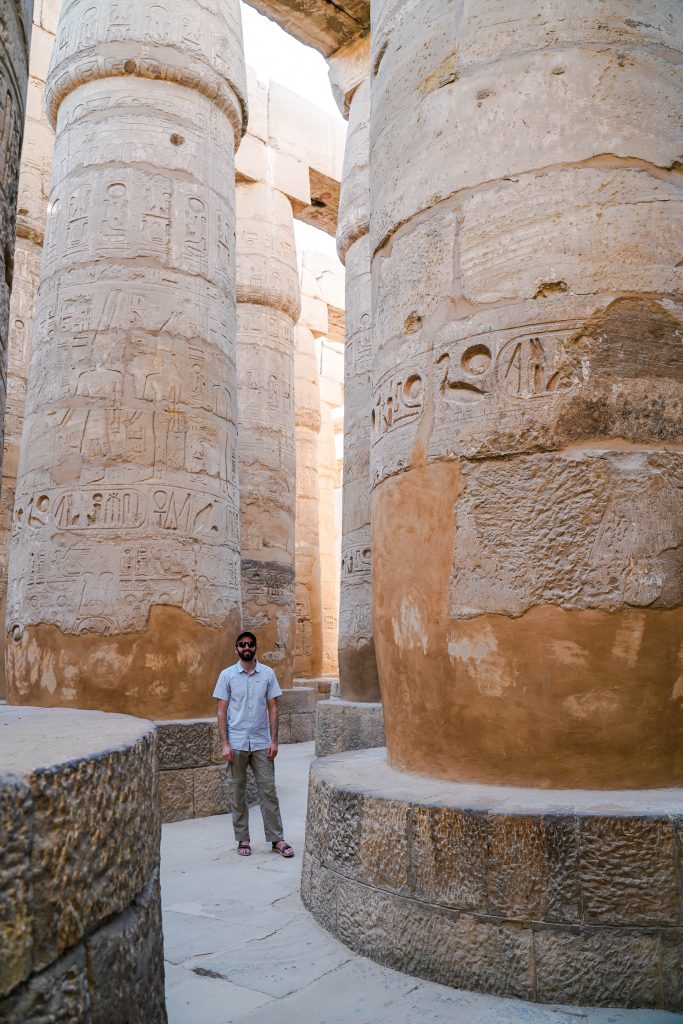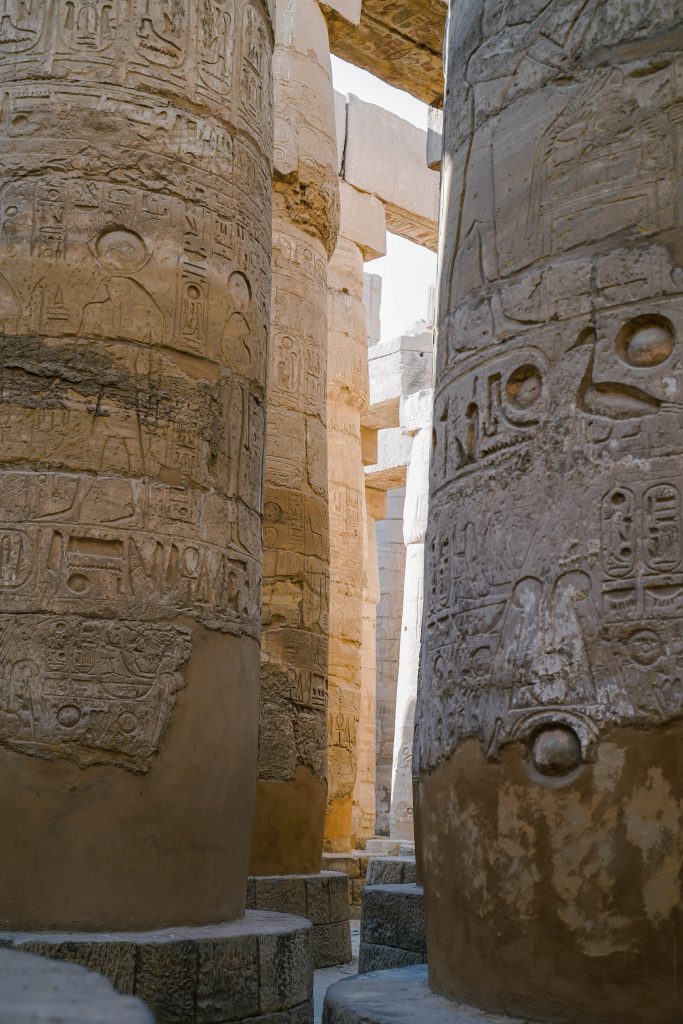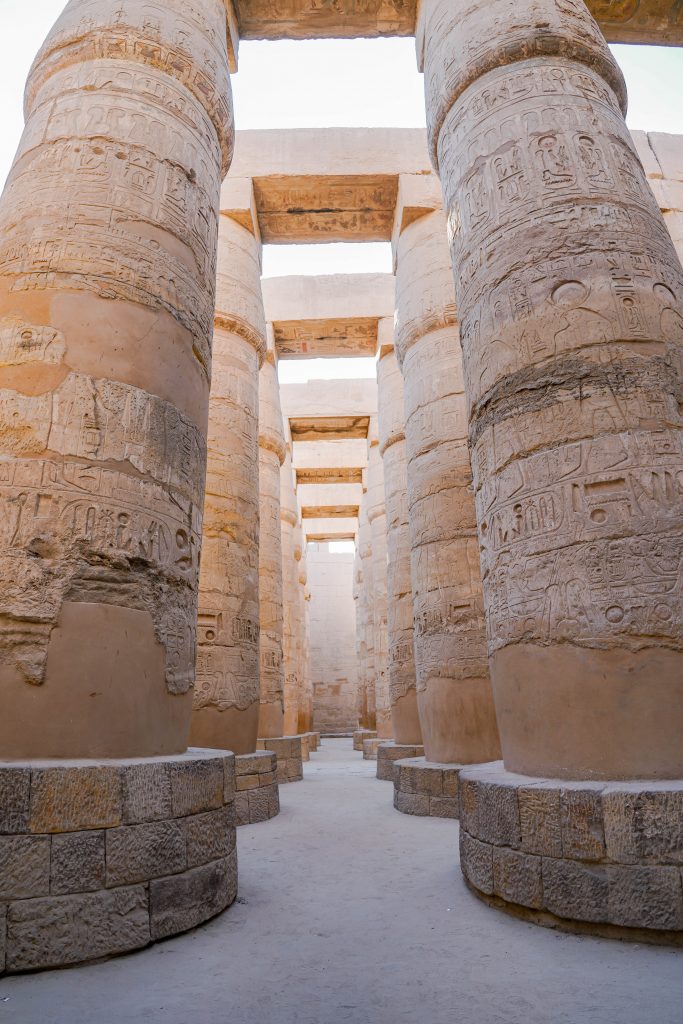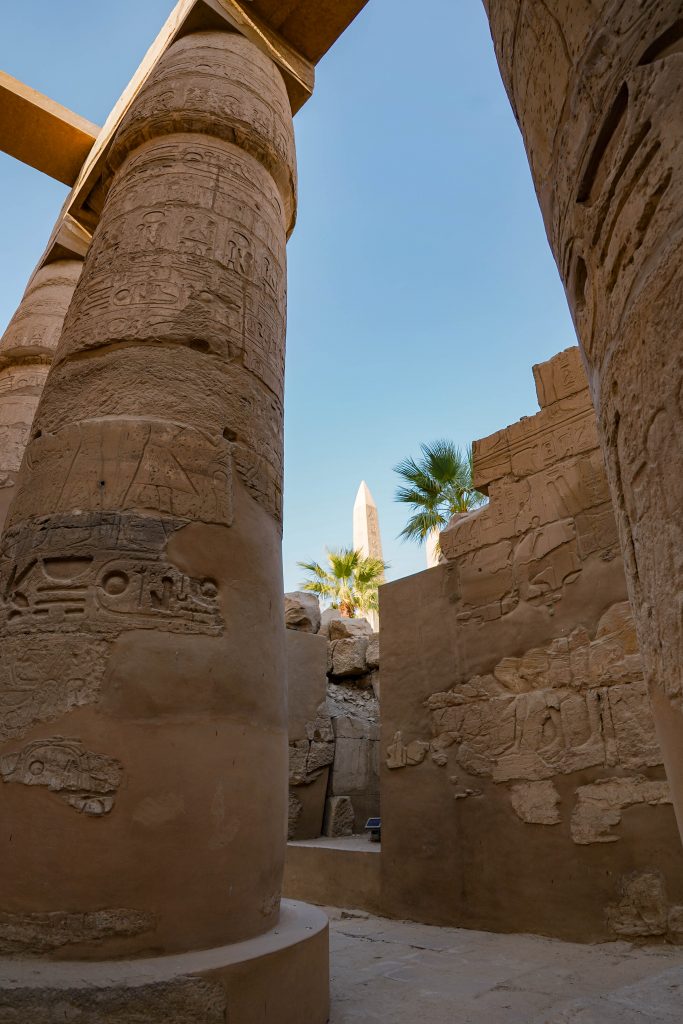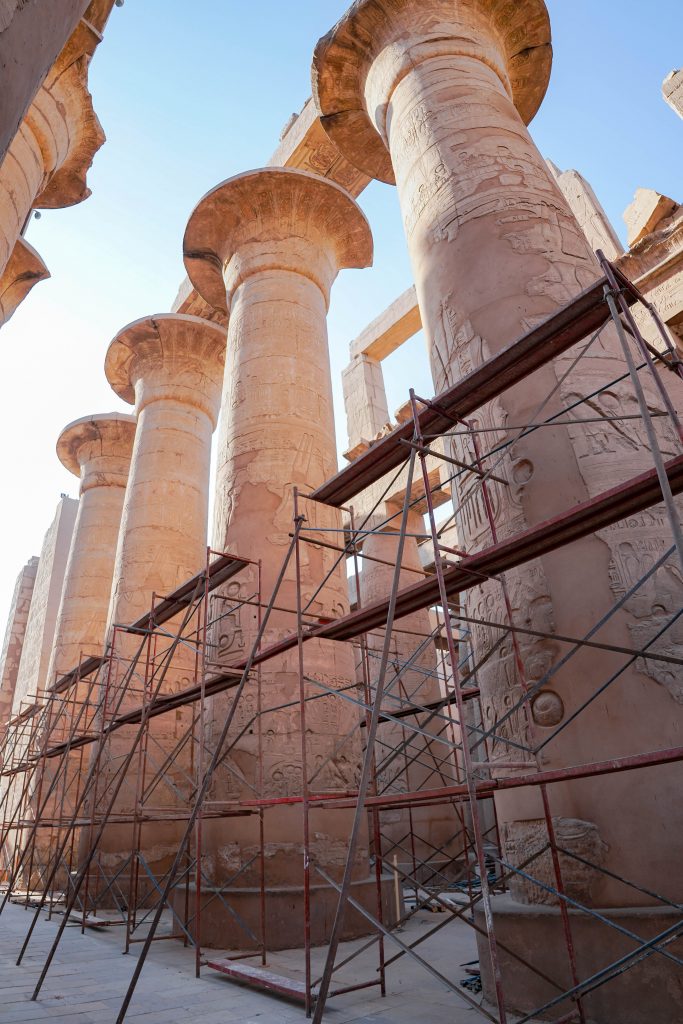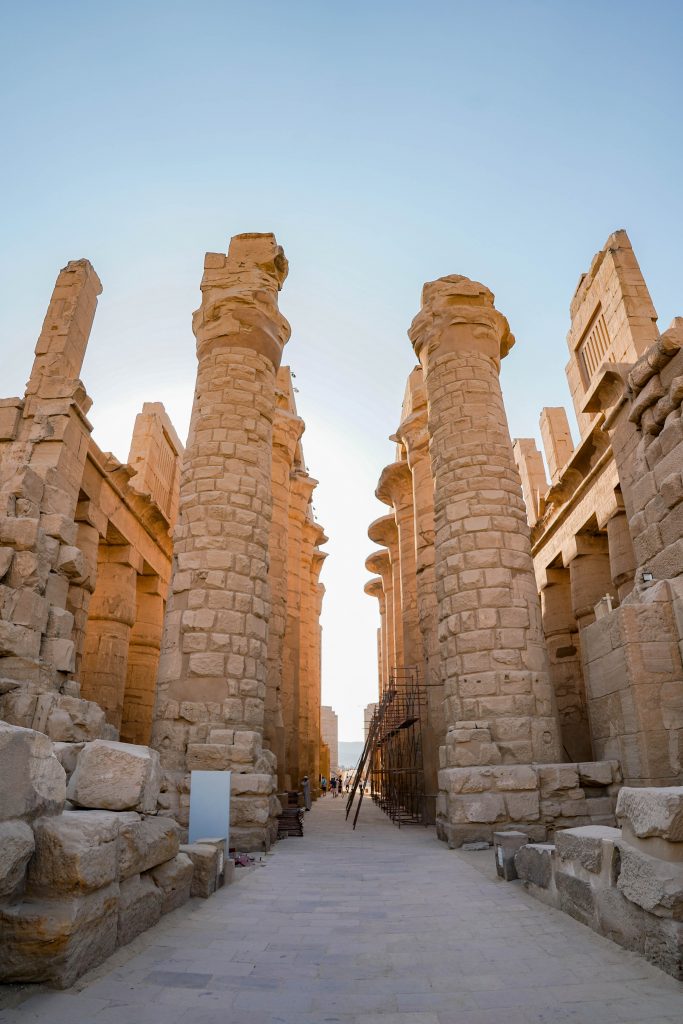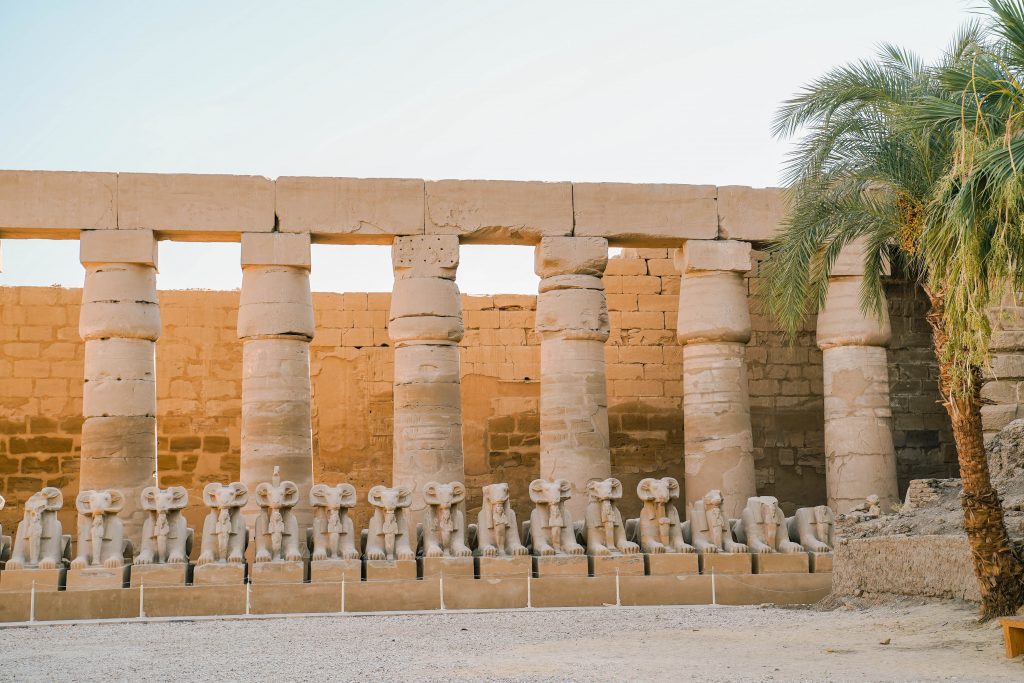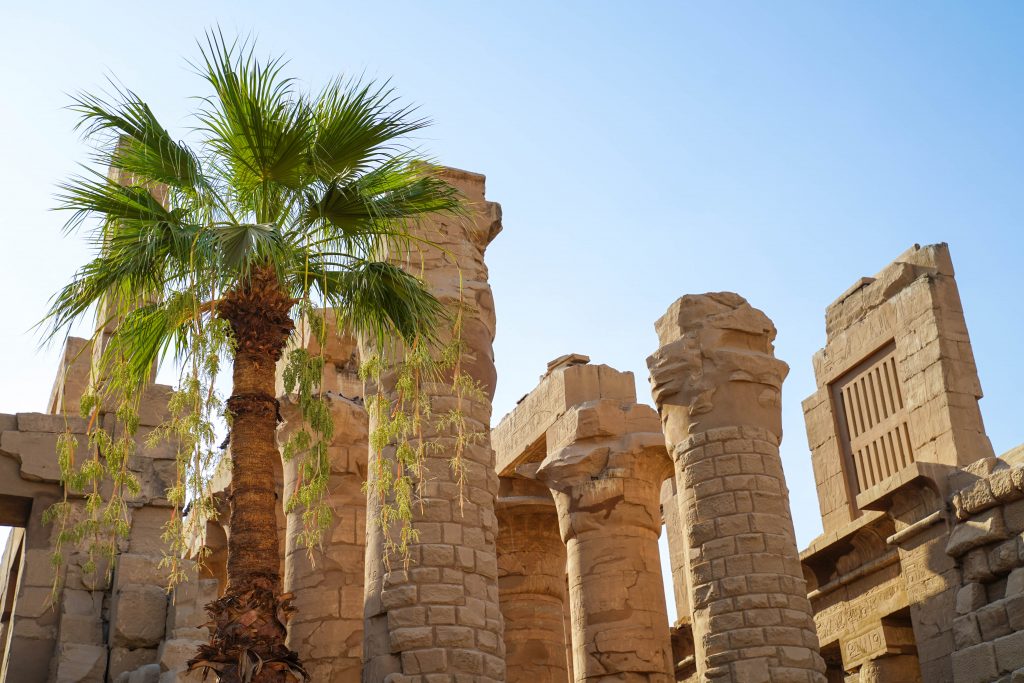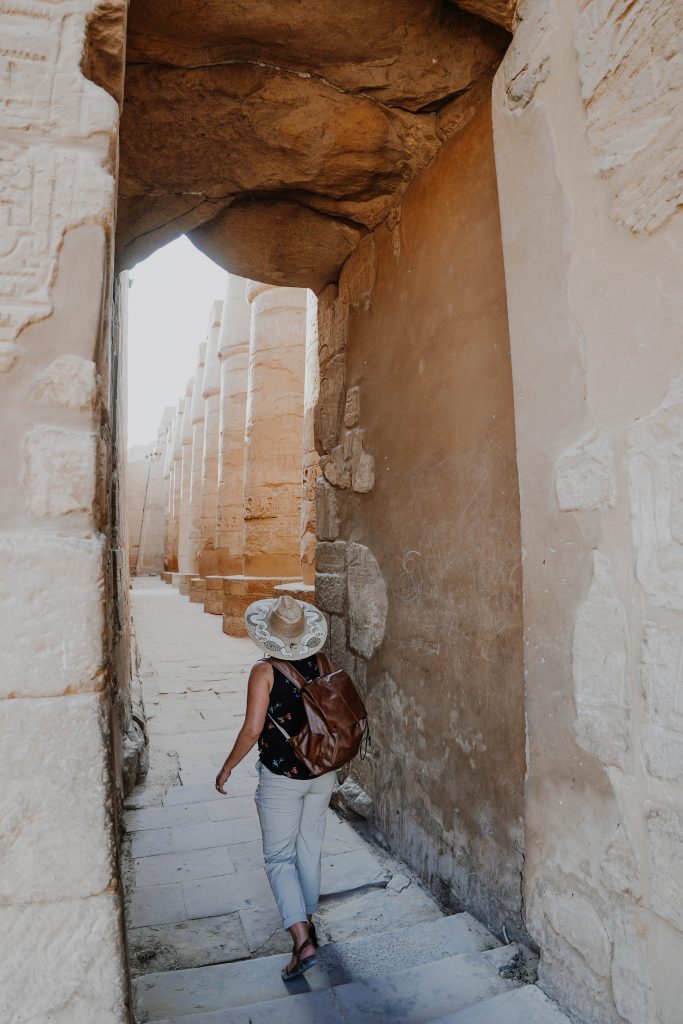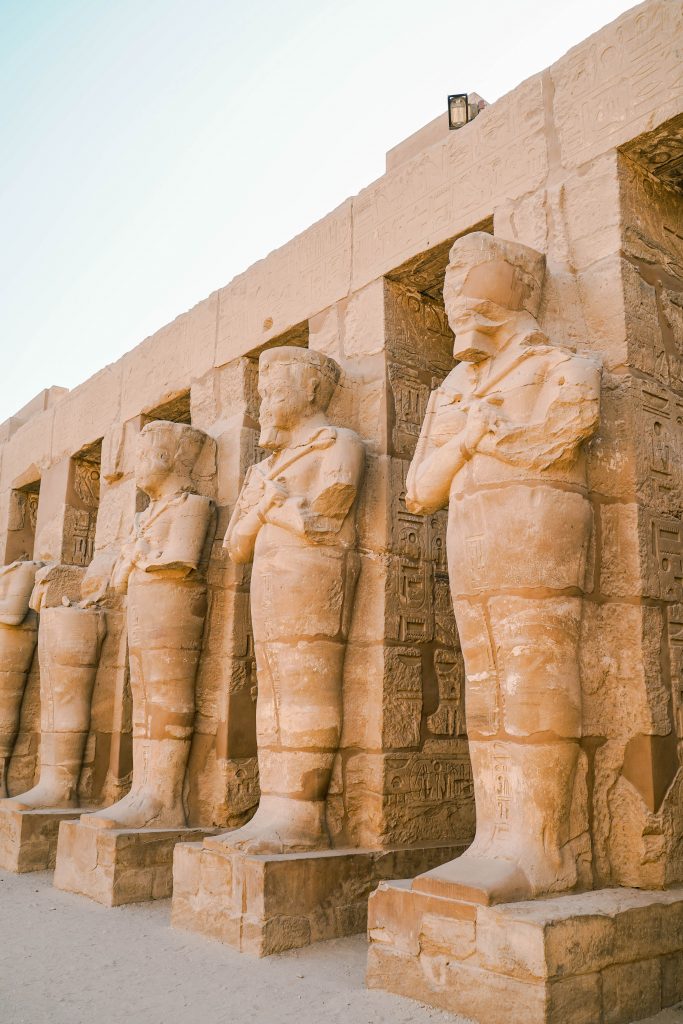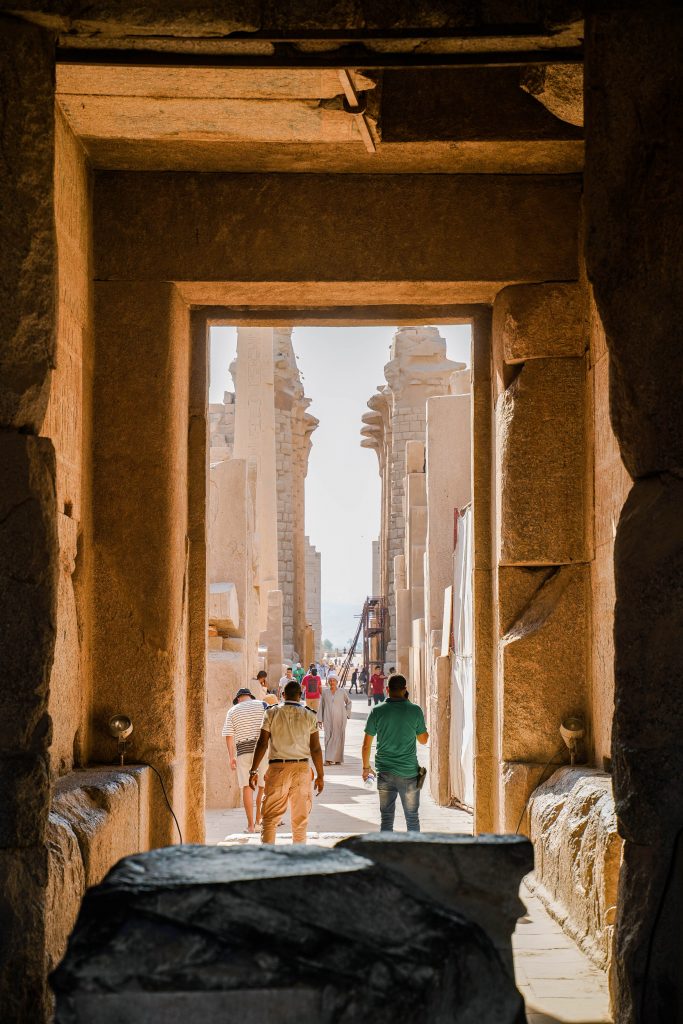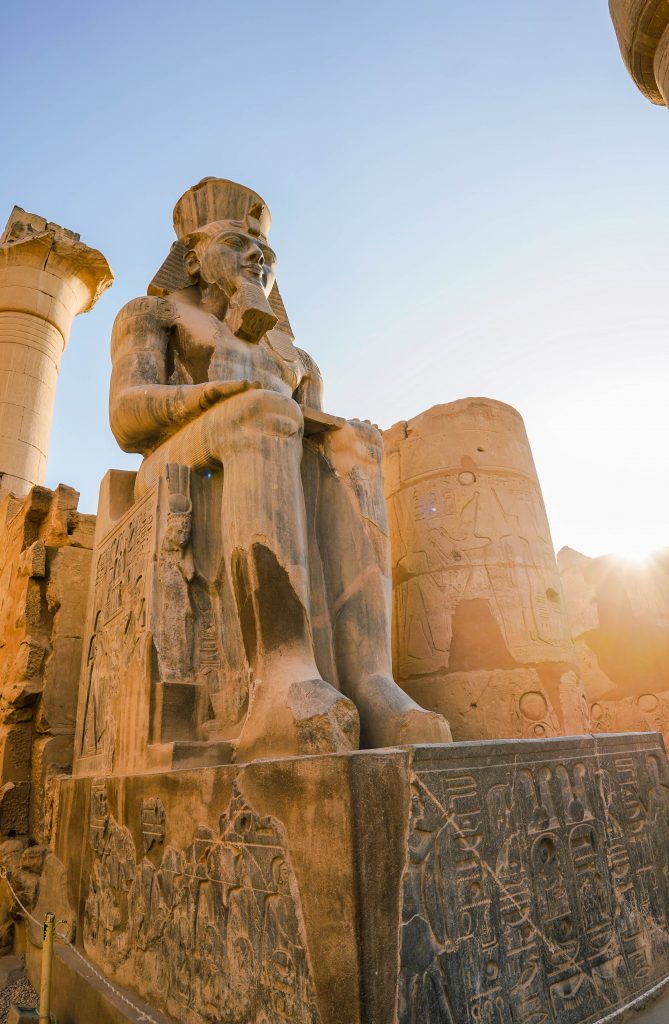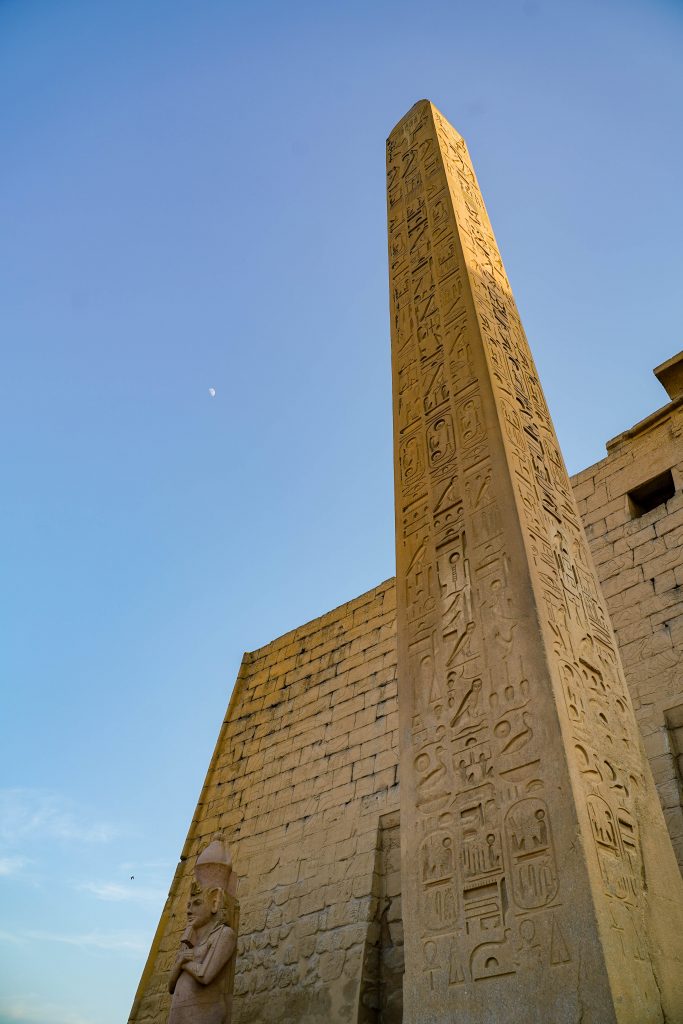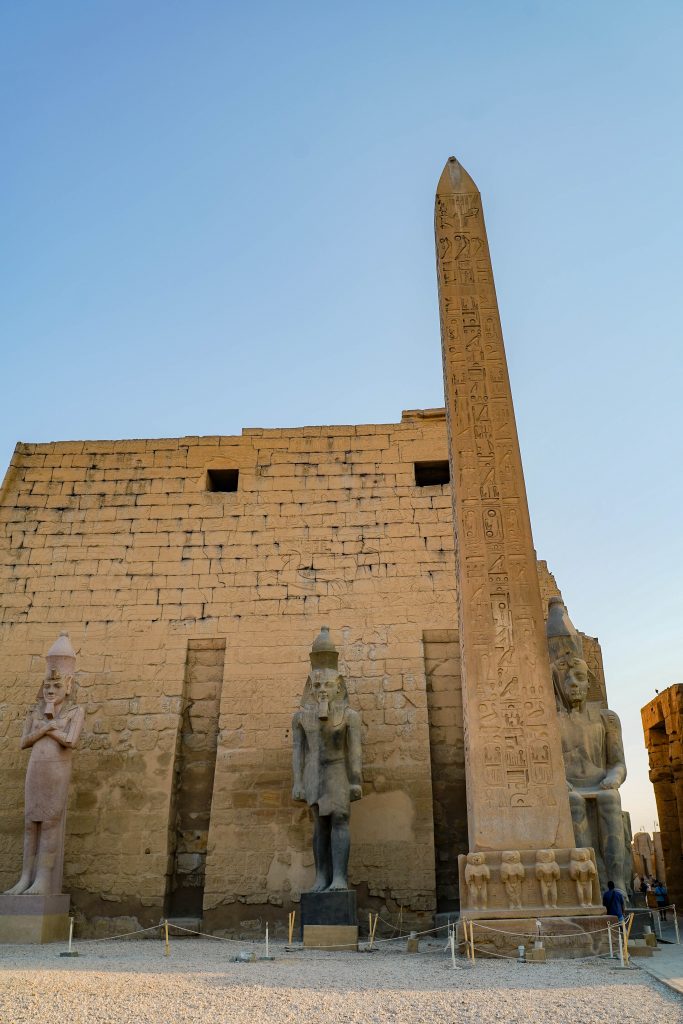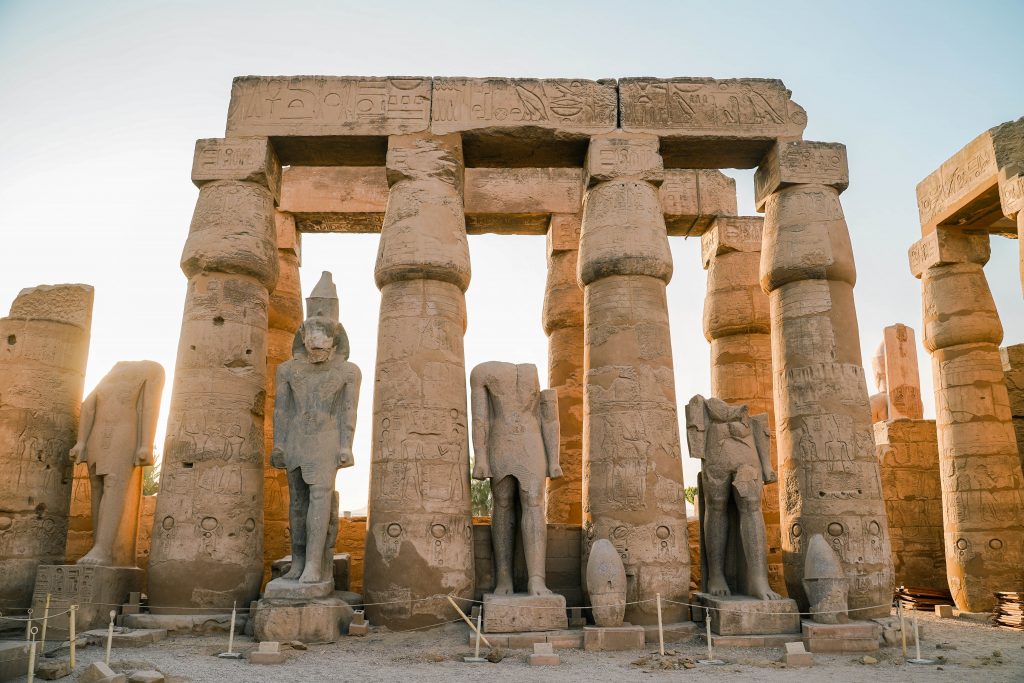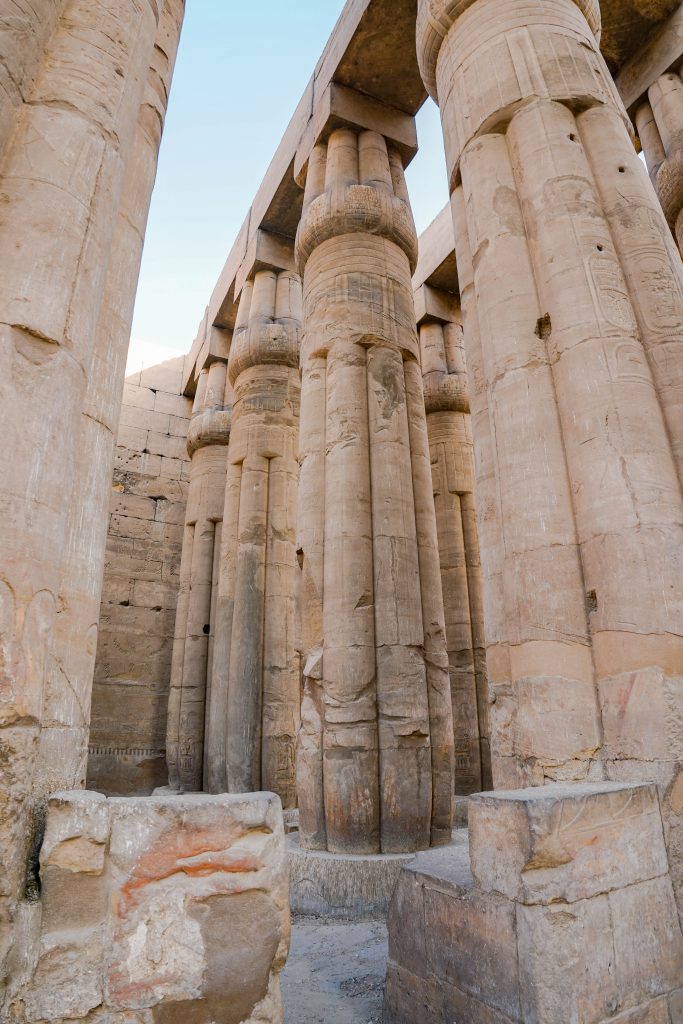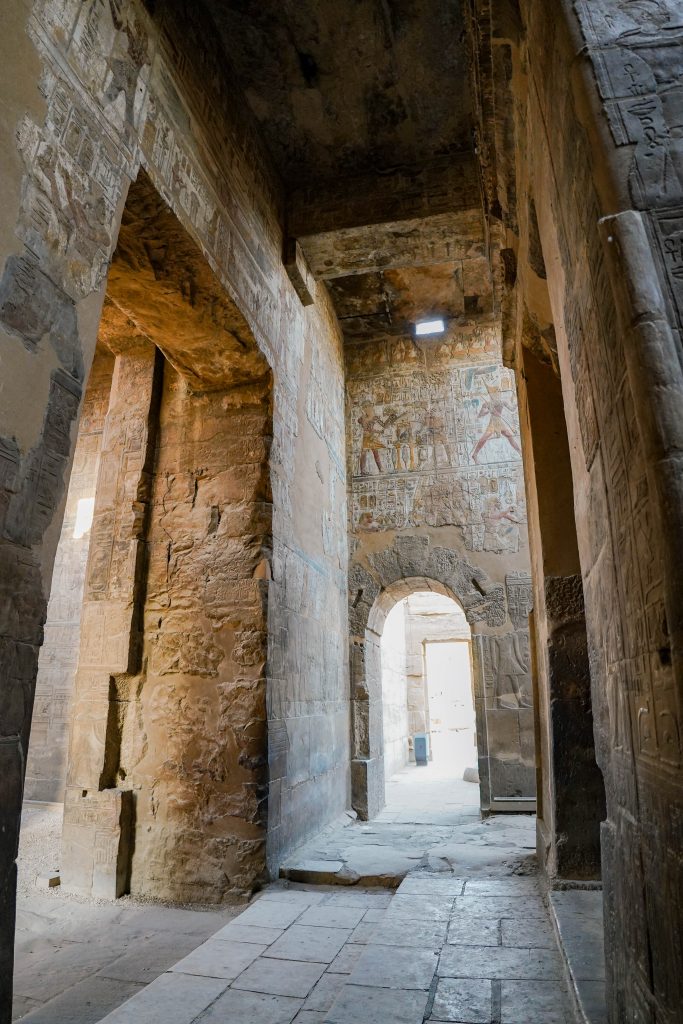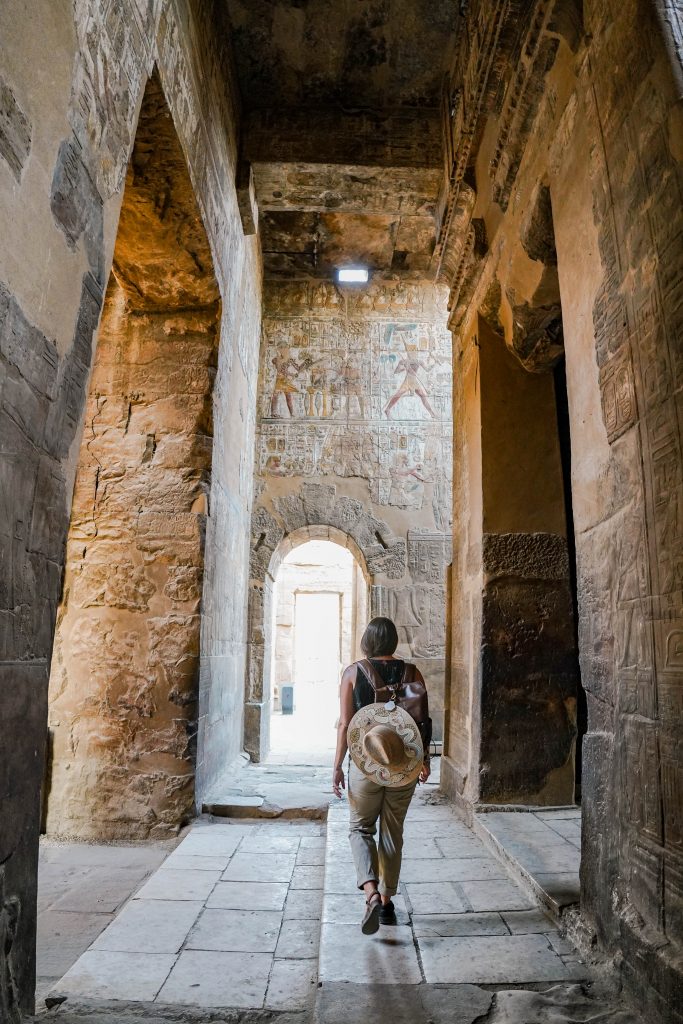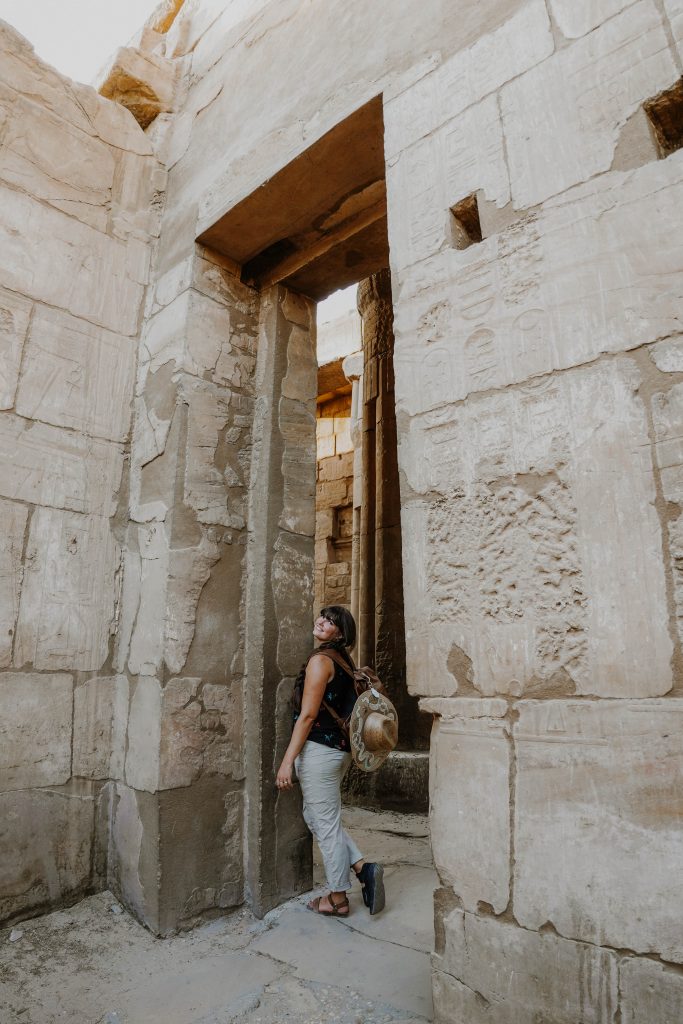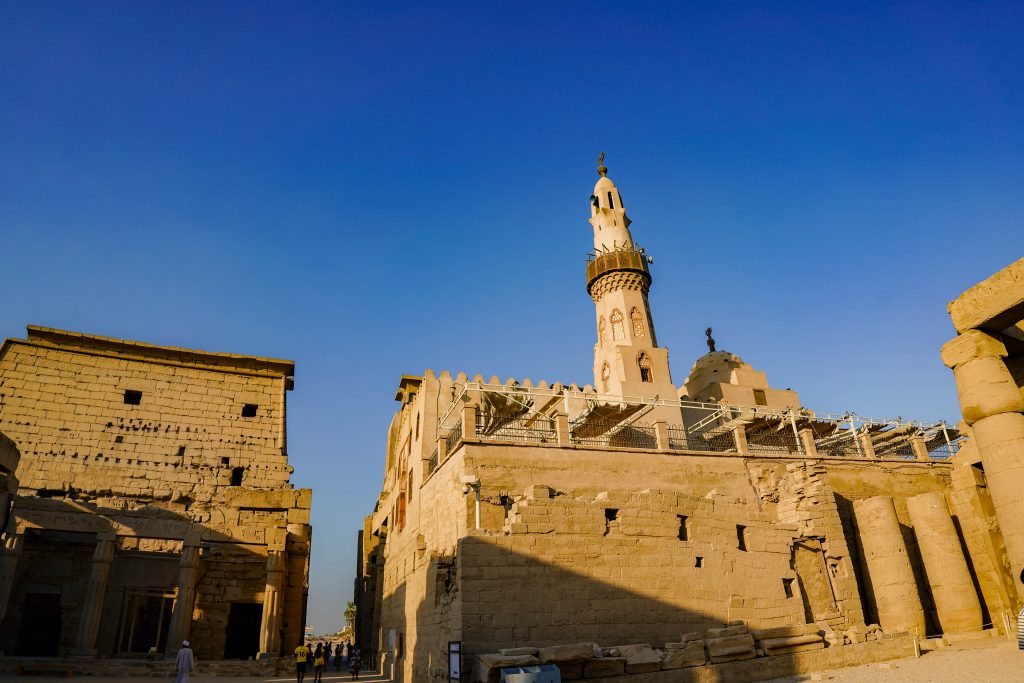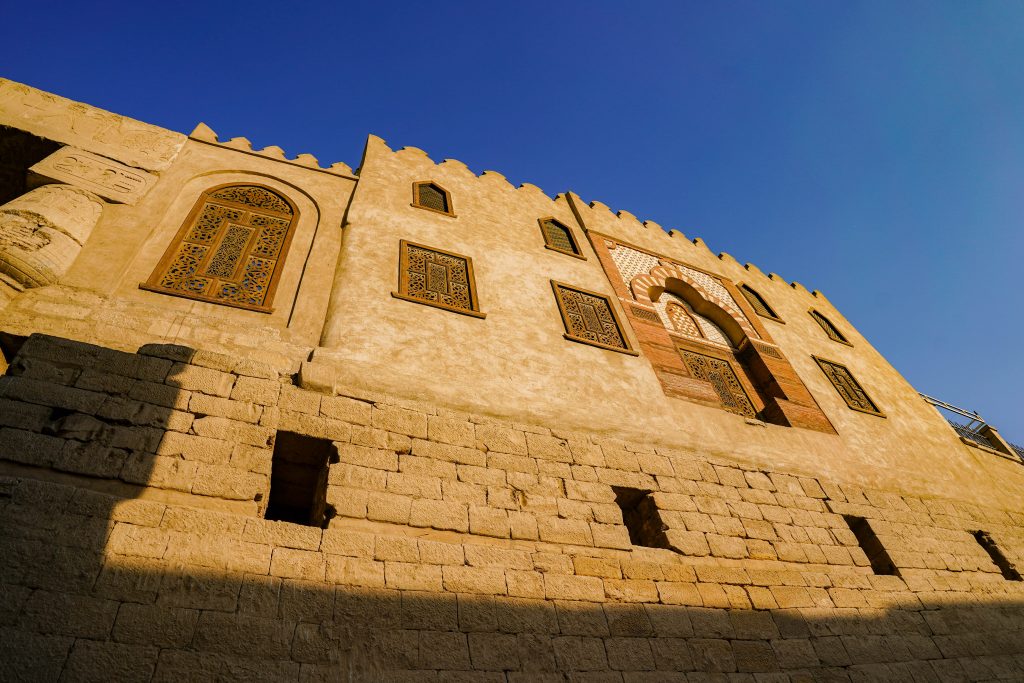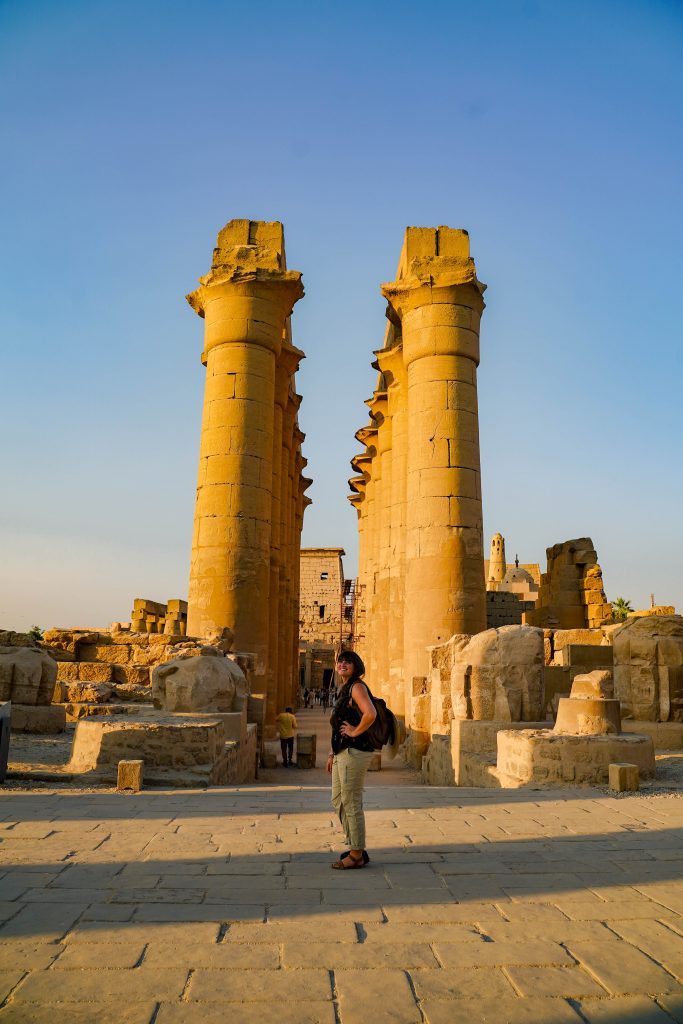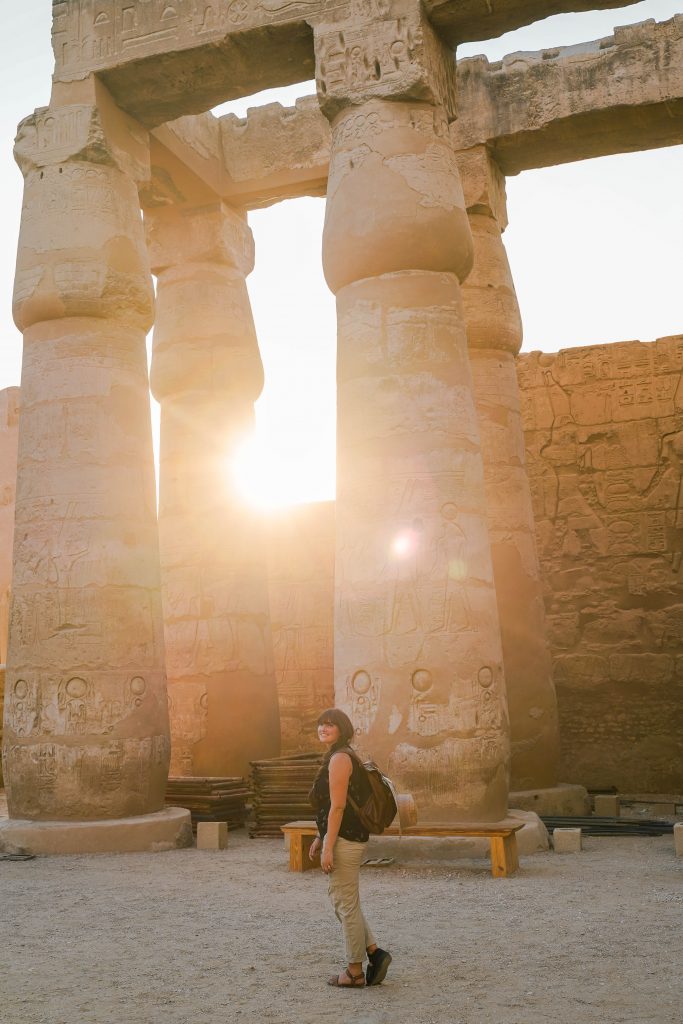When most people think of Egypt, the pyramids and Memphis (the old kingdom capital) come to mind first. Luxor (ancient day Thebes) holds a huge part of story and is not to be missed, from soaring temples constructed through the ages and bright colorful tombs buried beneath the earth- Luxor holds the key to understanding and learning some of the most interesting parts of Egypt’s history.
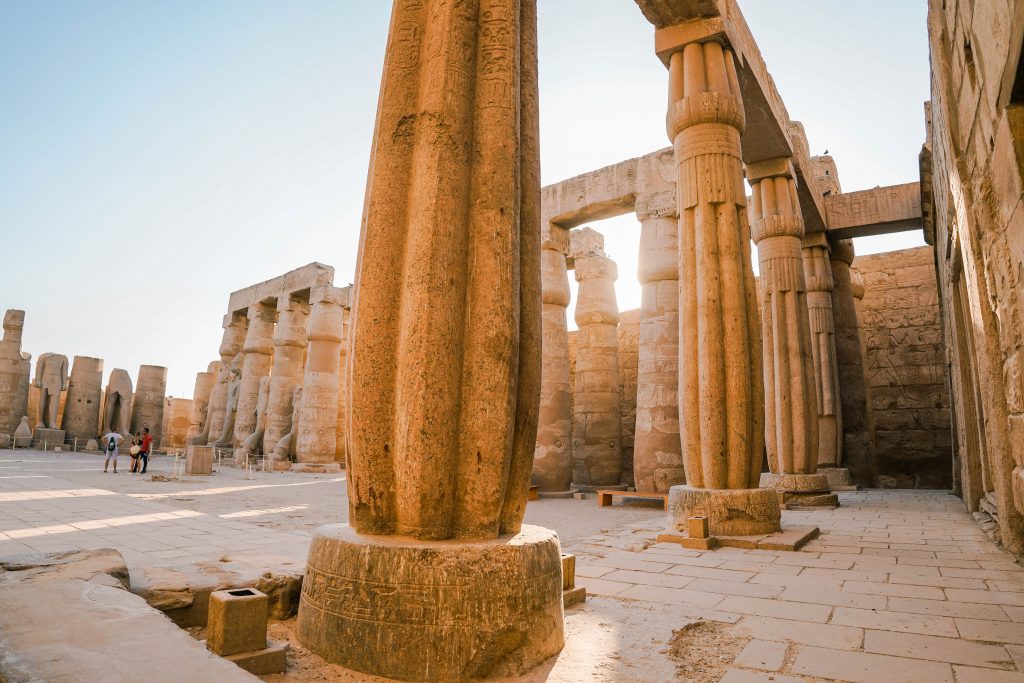
Like 2 sides of a coin, there’s 2 banks of Luxor and they each hold different types of archeological sites and different historical importance. The West Bank, where the sun sets, represents a journey of the dead to the afterlife. This is where you will find mortuary temples (temples created for preparing the kings for burial) and the magnificent tombs that were built to help guide their occupants to a successful here-after.
Information on the East Bank Temples
The East bank is where people live, work, worship… it’s where you’ll find a lot of the temples as the sun rises in the East- this represents life. Among the many temples that were built on the east bank, 2 of the grandest are located in Luxor- Karnak and Luxor temples. Both temples are generally combined in a combo tour and while they are massive, they only take a few hours to visit.
About Karnak Temple
The Karnak temple complex (for a complex it certainly is) is the second largest temple complex in the world. (the first is Angor-wat) It was not built by any single pharoah and was actually contributed to by over 30 known kings of Egypt. Started sometime in the middle kingdom (around 2000 BC), it was mostly developed during the new kingdom but continued development through the Ptolemaic kingdom (305-30 BC).
Its history is wrapped up in the history of Thebes and its changing role as capitol in the ancient world. It’s not designated for any single deity although the largest section is dedicated to Amun-Re. There are 4 sections of the temple, with the other 3 dedicated to the god Montu- a god of war, Mut- a mother goddess known to be the wife of Amun-Re, and Akhenaten (Amenhotep IV)- a controversial pharaoh who tried to change the religion of the time to include himself as a god.
The precinct for Amun-Re
This section is the largest and most impressive section of the temple- it’s also thankfully the section that is open to the public. Amun- Re is the chief deity represented here and there are lots of impressive statues and one of the largest obelisks- standing 95 feet (29m) tall in this precinct.
The pylon is also the largest of any temple in Egypt and there is still evidence of how they carved these giant gates with the presence of an unfinished mud hill (slope) that they used to carve the top and slowly remove as they moved down the wall.
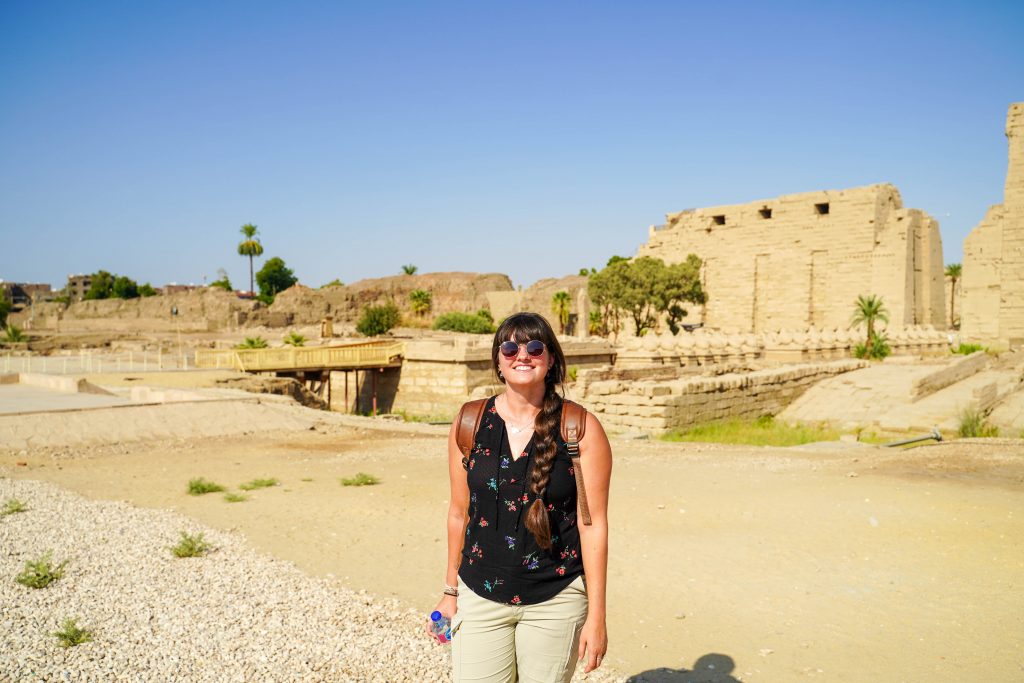
The most impressive section however is definitely the hypostyle hall. It was built around the 19th dynasty (1290-1224 BC) primarily by Seti I. The hall encompasses an area of 50,000 sq feet (5,000 m2) with a mind-blowing 134 columns arranged in 16 rows. 122 of the columns are 33 feet (10m) tall and the other 12 are 69 feet (21m).
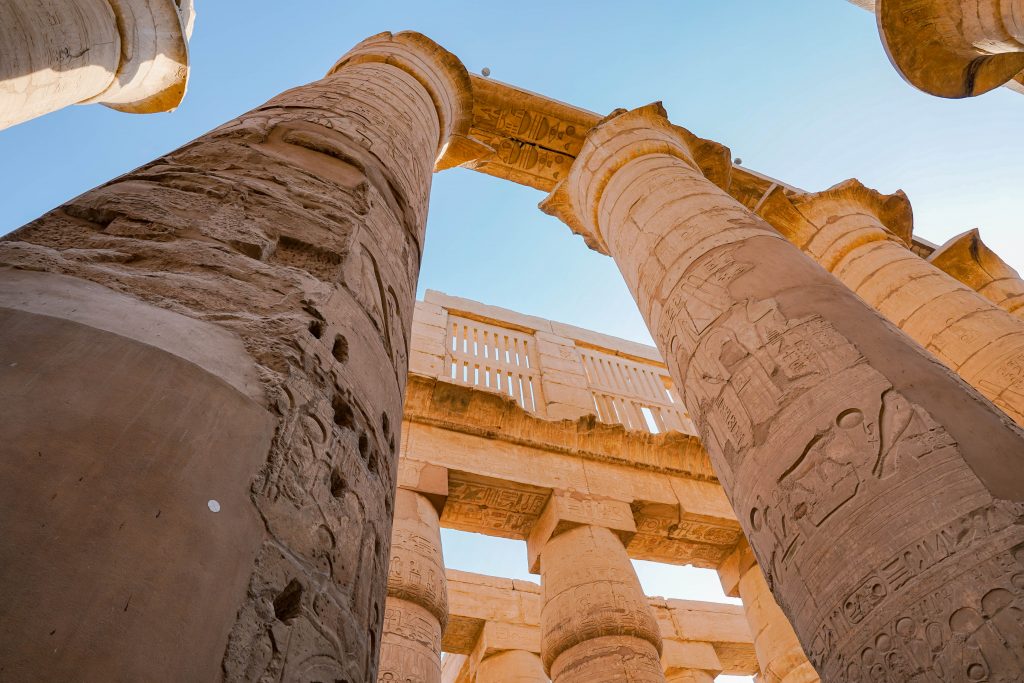
The height difference in the columns allowed for a light to come in- a sort of ancient day type of skylight since the entire area had a ceiling when it was built. This was the only area in any temple where we saw active restoration work going on. This is largely due to an event in 1899 where eleven of the columns collapsed in a chain reaction from ground water undermining their foundation. They were restructured in 1902 and similar work continues to strengthen the rest of the columns.

About Luxor Temple
Luxor temple while smaller than Karnak, is similar in that it isn’t designated for a single deity or pharaoh. It’s instead widely believed to have been dedicated to the “rejuvenation of the kingship,” and was used either in reality or just conceptually- as a place where kings of Egypt were crowned. It was built primarily by Amenhotep III in the 18th dynasty (1386-1349 BC) but other parts such as the colonnade were built by the young (famous) king TUT(ankhamun) and Ramesses II.

One of the more interesting parts of this temple is the history of various religions represented throughout. As the temple was buried in sand, other religious built ontop of the solid columns. First part of the temple was converted to a church by the Romans in 395 AD, and then converted to a mosque in 640 (a mosque that is still active and in use today). There’s evidence of Christianity in many temples throughout Egypt (including Karnak) however less records of there being a legitimate church on the site like there are at Luxor.
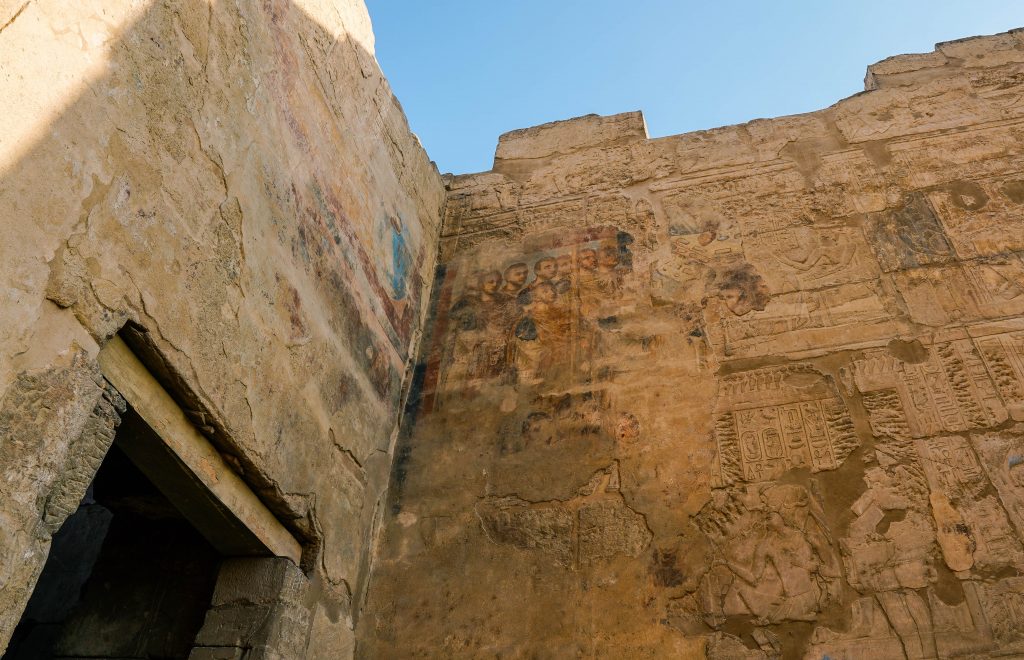
About our experience
We visited Karnak temple around 3:30 and then Luxor temple right after as part of our Nile Cruise tours. These were probably the busiest sites we visited but that could be due to time of day and just being located in a major, easy to visit city. This also felt like the hottest tour/ day we had but that could be chopped up to the fact that there’s very little breeze from the river and we spent longer at both temples than we did at any of the others.
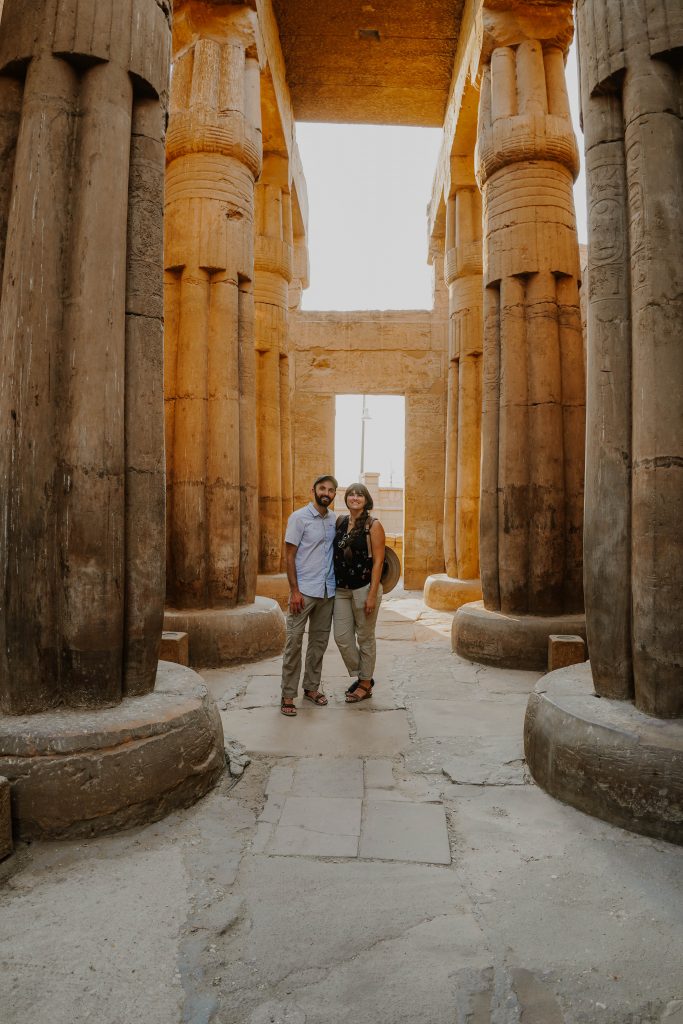
While both temples were incredible to see in person (especially the height and number of columns in Karnak) you could say we were templed out? By this point in our tour we’d already visited 3 temples that were all unique and impressive in their own way and less crowded… that being said, these are still considered must sees on any trip to Egypt and are easy to combine with the absolutely must do west bank sites.
